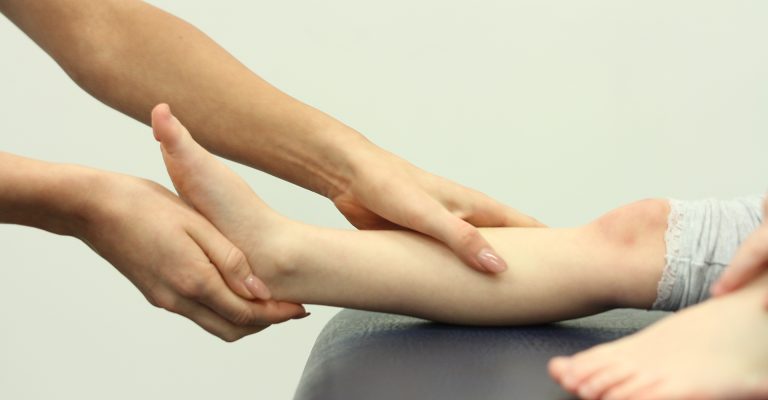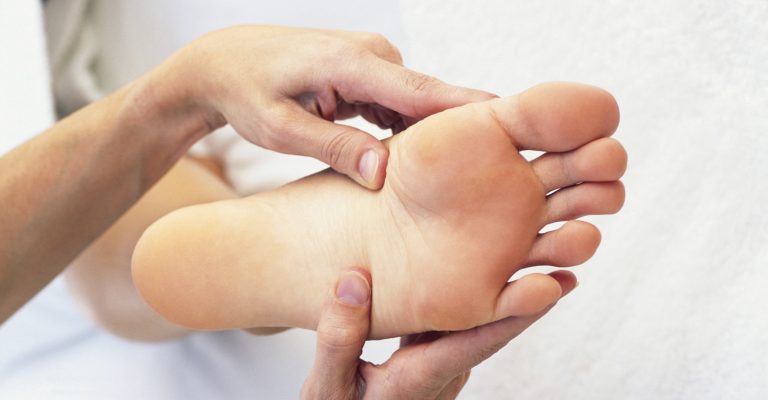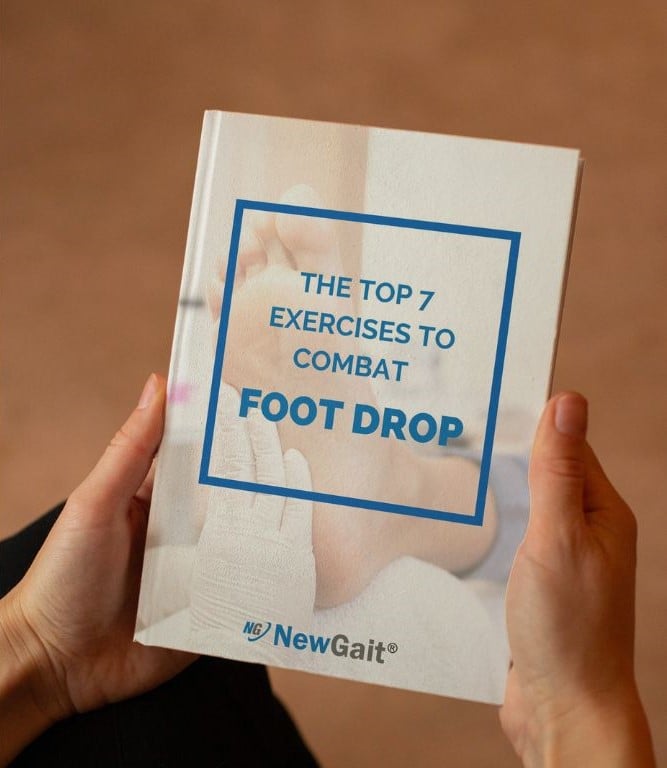When the muscles and nerves that lift the foot become weak or paralyzed, the result is foot drop, also known as drop foot or dropped foot.
For those who suffer from foot drop, many exercises may be performed to strengthen muscles and promote mobility, leading to more effortless, more natural walking.
The inability to put weight on one’s feet is not an illness in and of itself but rather a symptom of another, more critical condition.
The change in gait that characterizes foot drop is a telltale sign of the condition.
Because they cannot raise the front of their foot with each step, a person with a foot drop may inadvertently drag their toes down the floor.
They might raise their knee or swing their leg in a wide arc to prevent dragging their toes or stumbling.
This walking style, known as steppage gait, is used by those who suffer from foot drop to get around the problem.
The nerve or muscular weakness that results in foot drop typically results from one of three primary causes:
The peroneal nerve transmits signals to the calf muscles responsible for raising the foot. Most cases of foot drop can be traced back to damage to the peroneal nerve.
Because of its proximity to the skin’s surface and the fact that it wraps around the leg from the back of the knee to the front of the shin, this nerve is very vulnerable to injury.
Sports injuries, hip or knee replacement surgery, a leg cast, childbirth, and even crossing your legs can all cause damage to the peroneal nerve.
Neurological issues can also cause foot drops. Stroke, MS, cerebral palsy, and Charcot-Marie-Tooth disease are only a few of the conditions that could be to blame.
Foot drop can also be caused by a disease or condition that weakens or deteriorates the muscles over time. Conditions including polio, muscular dystrophy, and amyotrophic lateral sclerosis (Lou Gehrig’s disease) fall within this category.

In some cases, strengthening the foot, ankle, and lower leg muscles through targeted foot drop exercises might help alleviate discomfort. Range of motion, injury avoidance, balance, gait, and muscle stiffness are all aided by regular exercise.
It is possible to work with a physical therapist to begin correcting foot drop by strengthening the muscles in the feet, legs, and ankles. Your physical therapist will likely advise you to keep up with strengthening exercises at home, as recovery from foot drop can be lengthy.
If you suffer from foot drop, your chances of completing a full recovery are increased if you perform your at-home exercises regularly and without missing any days.
To restore normal function and, ideally, to resume walking normally, you need to strengthen the damaged muscles.
Please check with your doctor before beginning this, or any, workout regimen. If you experience discomfort while performing the exercises below, you should stop immediately.
To ensure your well-being and the safety of those around you, it is recommended that you seek the assistance of a qualified expert.
Get down on the floor and cross your legs in front of you. To alleviate pain, wrap a towel or exercise band around the troublesome foot and grip the ends with your fingers.
Towels and bands can be brought closer to the body by pulling them in.
Tend not to move for thirty seconds. In that case, take a deep breath and chill out for a whole minute. Do this three times.
Put your feet down on a chair and relax. Spread a bowl and 20 marbles on the ground before you.
Pick up the marbles and drop them into the bowl using the toes of your injured foot. Carry on until you’ve gathered every last marble.

Get down on the floor and cross your legs in front of you. Tie a resistance band around the leg of a sturdy piece of furniture. Close the band’s loop around the top of your injured foot. Reverse the motion by slowly bringing your toes back towards your body. Ten times more,
Get down on the floor and cross your legs in front of you. You may strengthen your foot muscles by wrapping a resistance band across the sole of your foot.
Take a firm grip on both ends. Put your feet in a pointed position and slowly return to a flat position. Repeat this ten times more.
Put your feet down on a chair and relax. Put something spherical and little on the ground in front of you (about the size of a tennis ball).
Carefully stretch your legs as you lift the thing from between your feet. Keep that position for 5 seconds, and then release. Ten times more.
Don’t let foot drop limit your activities of daily living or your sense of autonomy. Many persons who suffer from foot drop can overcome the underlying cause of their symptoms and return to normal walking with the help of rehabilitation by employing assistive devices to do foot drop exercises.
Consult a doctor about treatment options if you’re experiencing foot drop.
Recover from foot drop naturally. Get back on your feet with five simple exercises that can help you walk normally and resume your normal life.

Enter your email below to get our free ebook on the Top 7 Exercises to Combat Foot Drop. You'll learn simple exercises to strengthen your muscles, improve balance, and reduce symptoms.
Thanks for signing up for our free ebook on the Top 7 Exercises to Combat Foot Drop! We've sent the download link to your email address, so check your inbox (and spam folder, just in case) to access it.
We hope our ebook is helpful for you in managing your foot drop symptoms. And if you're interested in our foot drop products, feel free to browse our website for more information.
Best regards,
NewGait